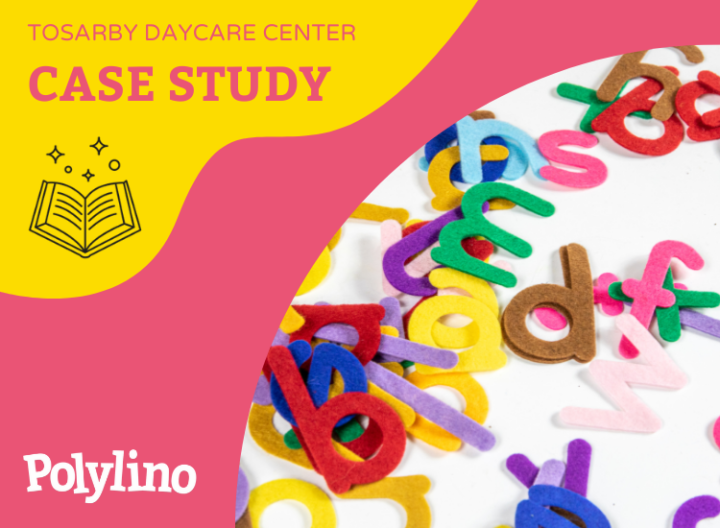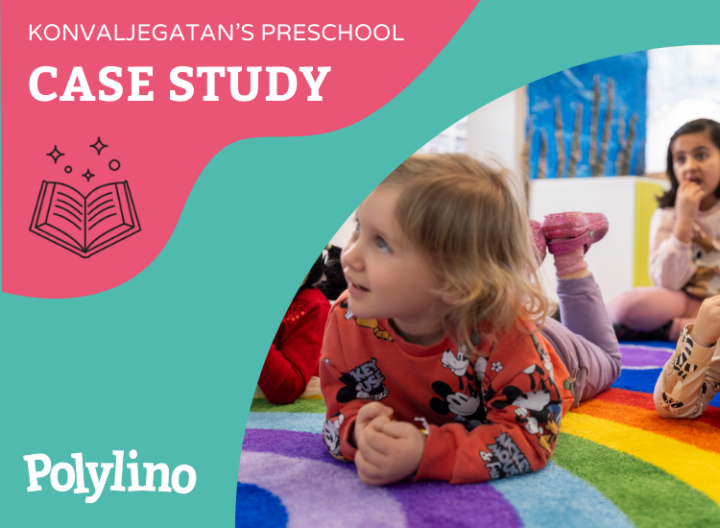- Case Study
18 March, 2024
Velkomstbarnehagen Case Study
Polylino is a service which is currently used in several countries across Europe. The Norwegian team met up with Friha Iqbal who works at Velkomstbarnehagen in Drammen municipality - a nursery who use the Polylino service in their setting. Here is what Friha had to say.

Information about the kindergarten
Drammen municipality has its own Welcome Kindergarten for newly arrived refugee children, who are offered a place until they find a place in regular kindergartens. The nursery has 27 children and 7 employees. The children come from Ukraine, Syria, Turkey, Rwanda and Eritrea. Staff in the nursery can speak Tigrinya, Russian, Ukrainian, Arabic, English, Urdu, Hindi, Punjabi and Norwegian. The kindergarten started work with Polylino in January.
Can you tell us a bit about how you work in the nursery, Friha?
At Velkomstbarnehagen, we have a strong focus on safety and care. We emphasize creating a good relationship with the children and their families. It is important that we create trust and are able to put ourselves into other people's perceptions, so that we achieve good cooperation. Play has a central place in the kindergarten. Having good play skills provides room for joy, development, care and trust. Non-verbal language has a central place in the Welcome Kindergarten, and is just as important as the verbal language that is stimulated through play.
We have four investment areas that we focus on; Play, language development, self-care and physical development.
Our vision is; A good place to live where we cheer and take care of each other.
How do you include Polylino in this work?
We have reading sessions with a single child, smaller groups and together. We use both the big screen and the iPad with the children. We also have some physical books available which can then also be found in Polylino's digital picture book library. The child then listens to the book in their own mother tongue, but has the opportunity to feel the book and turn the page. We see that it helps the children who depend on having something in their hand.
We see that the children have greatly benefited from using Polylino. We can use the same book in different languages, which are then represented in the nursery. This helps the children gain a common understanding. We work in such a way that we divide the children into smaller groups. The adult takes the children with them and has a reading session with the children in their language. Then we can also have joint gathering time where we use Norwegian, in this way the children are able to understand more of the Norwegian language once they have heard the book in their own mother tongue. By using Polylino in this way, it has helped the children to gain more ownership of the books and the children want to have reading time.
You mention that you work with Polylino in larger groups and individual children, can you tell us more about this?
By using Polylino in reading time with individual children, we see that the child finds it interesting to listen to, especially when we take the child somewhere where there is less noise. Then the child is able to concentrate better and it provides a form of security when the child understands the language. In this way, we get a better mapping of the child when it comes to language development. The voices that have been used in the books are calm and pleasant, this has a lot to say for children who are a bit sensitive and can be distracted.
After all, it is important that the nursery school sees progress linguistically for the children with the tools used. Do you see this progress with the use of Polylino?
We see that the children have made great progress, even though it has not been that long since we started with Polylino. We work a lot with projects in the kindergarten. We adapt a book that can fit our project. Then it's nice to have Polylino. The children have learned many words both in Norwegian and in their own language. We have a close collaboration with the parents in the nursery and we have received feedback from the parents that they notice that the children use Norwegian words at home as well.
As the manager, I am not on the floor that much, but when I come into the room and speak Norwegian to the children, I feel that they have started to understand me more. Before, they nodded, and used more non-verbal language, i.e. body language. Now I see that they want, and even try, to communicate with me.

Do you have any examples of how you have used the books in different ways in your day-to-day life in the nursery?
We have benefited greatly from using Polylino in our language work in the kindergarten. We have worked dynamically with both language development and play skills. We also have a strong focus on children's participation. The children have been interested in shop games. We saw this through observations. We set about creating a shop and collected empty packaging. We knew in advance that the children enjoyed listening to books about little sisters, and we found the book "Little Sister in the Shop". We used both the book and the store toy dynamically. We again divided the children into smaller groups and they listened to the book in their mother tongue and in Norwegian. They also listened to Little Sister together, but then we used Norwegian. Then we were with the children in the play store to both play and guide. We now see that the game has moved on to family play as well. Now the children want docks and trolleys with them when they go shopping for food at the store. We now arrange family play for the children. The play and the language are developing, and it's great fun to watch.
The children benefit greatly from such a project. We saw the same thing when we read the goat kid who could count to 10. The children now count up to twenty in Norwegian. At the same time that they know what all the animals are called in Norwegian. We are going to visit a farm soon 😊
Do you have any beginner tips for other educators on getting started with Polylino?
The first thing I want to say is that it is important to get to know Polylino. Install it in all iPads and other digital tools. You must have a common understanding and a common goal in the department. What is the purpose of using this digital picture book library? Why should you use it? When should you use Polylino? I would also advise you to explore with the children, let the children find the books they want to listen to. It is also important to have an overview of the group of children, which of the children need smaller groups, language skills etc. This way you will be able to use Polylino in a good way!
Finally, and perhaps the most important question: What do the children think of Polylino?
The children think it's nice that they can choose books that are in the language they understand and can speak. We see that the interest in the books is more now than it was. The children do not mention Polylino, and do not say that Polylino is a good language stimulating tool, but through their actions we can see that they show more interest in the books. The parents have also said that the children want to go to the library in town.
A big thank you to Friha and Velkomstbarnehagen!


